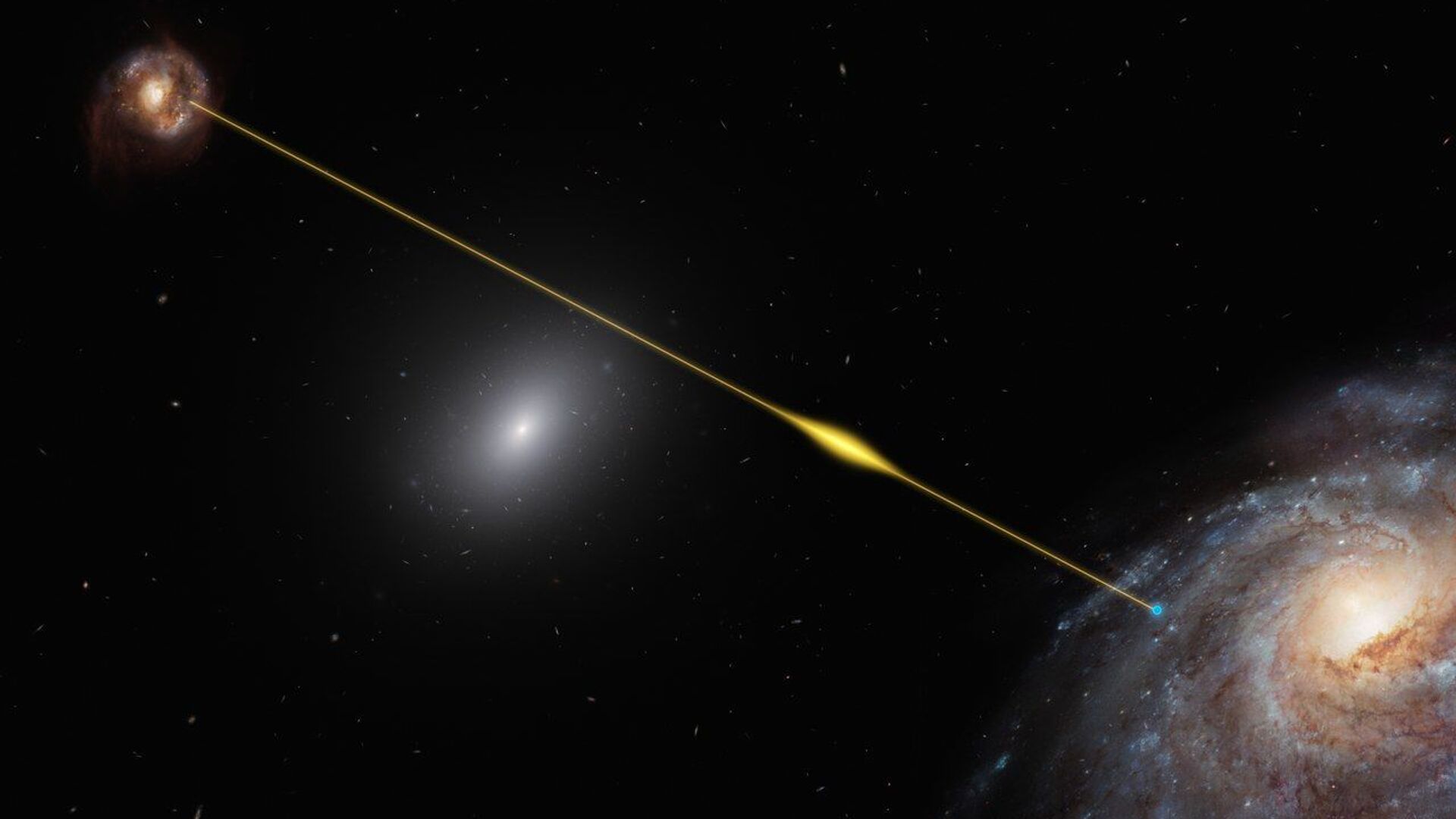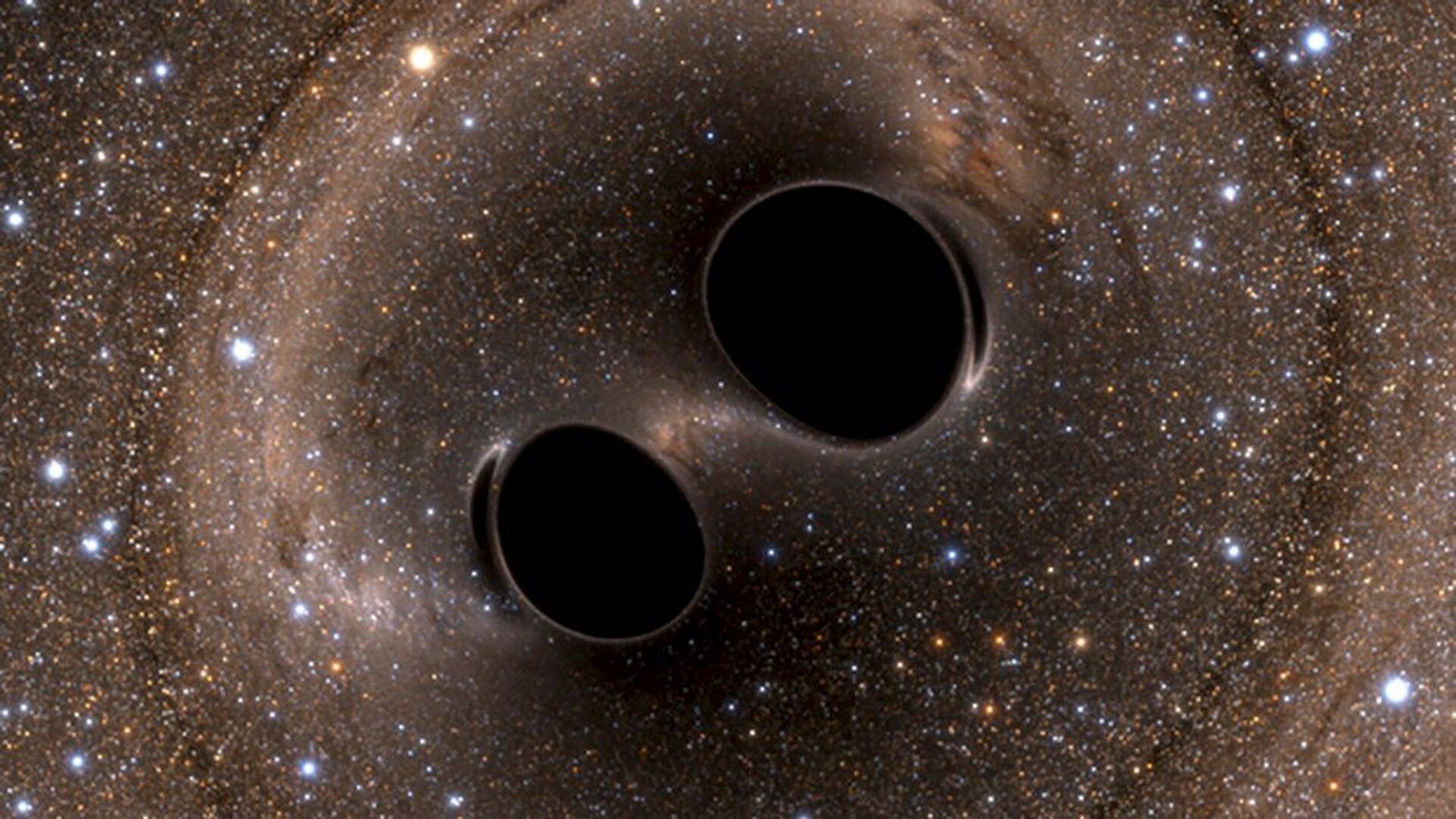Cryptic Repeating Fast Radio Burst Traced to Cosmic Blasts Fuels Speculations About Alien Technology

© Wikipedia / ESO/M. Kornmesser
Subscribe
Fast radio bursts, or FRBs, are a type of transient radio pulse, first discovered in 2007. Astronomers regularly detect the cosmic phenomena, which is often traced back to galaxies billions of light-years away, but are yet to determine the actual cause of the flashes.
A mysterious repeating fast radio burst has been discovered as the cause of a set of cosmic explosions.
Called FRB 121102, the largest set of fast radio bursts, or FRBs events, registered so far, was detected by researchers during testing of China's Five-hundred-meter Aperture Spherical radio Telescope, or FAST, as it was being commissioned.
The Five-hundred-meter Aperture Spherical Telescope is the largest radio telescope on earth. It was built in China's Guizhou Province and went online in 2015. Sort of sad juxtaposition between this and Arecibo. pic.twitter.com/3zP2fpc5dp
— Tyler Rogoway (@Aviation_Intel) August 27, 2021
Over a period of 47 days, between 29 August and 29 October, 2019 the team of US and Chinese scientists detected 1,652 millisecond-long emissions of radio waves in space.
In their study published in the journal Nature, the team voiced hope the discovery of this activity from FRB 121102, known as a repeating fast radio burst since 2016, could help scientists learn more about the potential source of fast radio bursts.
"This was the first time that one FRB source was studied in such great detail. The large burst set helped our team hone in like never before on the characteristic energy and energy distribution of FRBs, which sheds new light on the engine that powers these mysterious phenomena," said astrophysicist Bing Zhang, professor at the University of Nevada, Las Vegas, and study coauthor.
The energy of the signals registered in the latest study "severely constrains the possibility that FRB 121102 comes from an isolated compact object," said study coauthor Wang Pei, assistant professor from the National Astronomical Observatories of the Chinese Academy of Sciences, in a statement.
While solitary radio bursts are not repeated, fast radio bursts like FRB 121102, discovered in 2007, were found to emit brief energetic radio waves multiple times in 2016.
Some fast radio bursts, capable of discharging more energy than hundreds of millions of suns, have previously been traced back to their distant galaxies. Thus, FRB 121102 was traced back to its small dwarf galaxy more than 3 billion light-years away in 2017.
However, scientists have yet to determine the exact origin and cause of the flashes. Some people opt for the more sensational explanation, suggesting that alien technologies could be behind these bursts. However, evaporating black holes, colliding dense objects, or hyper-magnetized neutron stars, or magnetars - produced when young, massive stars explode and die - are what scientists theorize could be triggering the outbursts. These dense stars possess the strongest magnetic fields found in the universe.
Six new fast radio bursts, including a repeating one like FRB 121102, have been detected with the Commensal Radio Astronomy FAST Survey.
Commensal Radio Astronomy FAST Survey Discovers a Millisecond Pulsar https://t.co/XO8SWokaes pic.twitter.com/l3TRSwCDYv
— bintroo (@bintroo) April 29, 2018
"As the world's largest antenna, FAST's sensitivity proves to be conducive to revealing intricacies of cosmic transients, including FRBs," said professor at the National Astronomical Observatories of the Chinese Academy of Sciences and lead study author Li Di.


